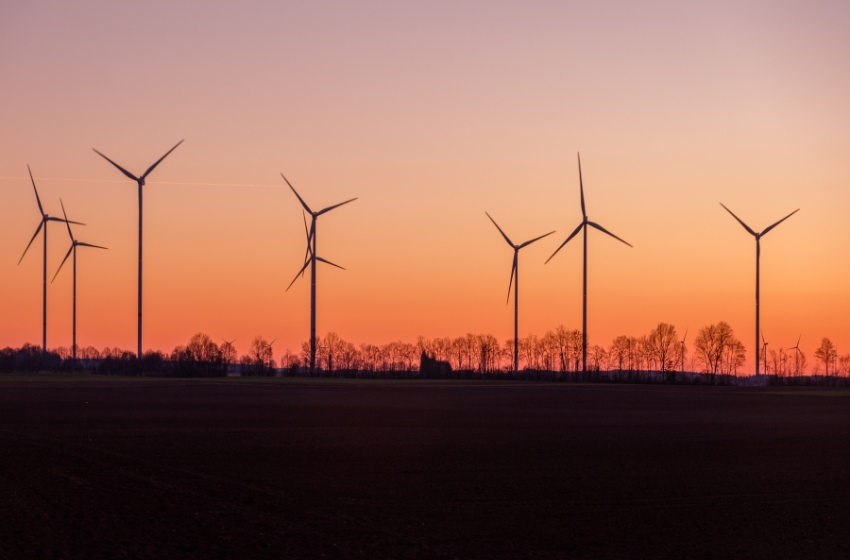The research was conducted by the Ukrainian Institute for the Future.
Before the full-scale war, Ukraine had significant renewable and traditional energy facilities:
- Hydropower – 6,646.7 MW
- Solar power plants – 7,426.9 MW
- Wind power plants – 1,673.5 MW
- Gas-piston cogeneration units – 18.4 MW
Altogether, the country produced about 128,436 GWh of electricity annually.
In 2019, Ukraine ranked among the top ten countries globally for renewable energy growth, and by 2020, it was among the top five in Europe for solar generation growth. By early 2022, the total capacity of green energy facilities reached 9,656 MW. However, Russia’s full-scale invasion effectively halted further development of the sector and caused significant damage.
Solar Energy
About 60% of industrial solar power plants are located in southern and southeastern regions of Ukraine — areas experiencing the most intense combat. Due to their large geographic spread, these facilities are particularly vulnerable to shelling.
Estimates indicate that 30–40% of capacities in these regions were damaged, approximately 1,120–1,500 MW. The largest losses occurred in the Mykolaiv energy hub. For instance, the largest solar power plant in Mykolaiv (22 MW) was struck twice by ballistic missiles. Additionally, 5.5 km of 150 kV transmission lines supplying Mykolaiv city were destroyed.
In Kharkiv region, nearly all industrial solar plants were destroyed.
Even surviving facilities operate under restrictions: dispatchers impose generation limits almost daily to maintain grid stability. This makes operations unprofitable, especially considering loans and obligations to banks and international financial institutions.
Private solar plants were also affected. At the beginning of 2022, Ukraine had 1.2 GW of such installations, but about 280 MW (24%) were destroyed due to attacks in residential areas.
Wind Energy
At the beginning of 2022, Ukraine had wind power plants with a total capacity of 1,673 MW. The main wind farms were located in Zaporizhzhia, Mykolaiv, Odessa, and Lviv regions.
Due to the war, over two-thirds of the turbines have been stopped. In Zaporizhzhia region, most of DTEK’s wind farms, as well as the Zaporizhzhia wind farm of Eurocape Ukraine LLC, have completely ceased operations. There have also been cases of complete destruction of individual turbines.
Bioenergy
The capacity of Ukrainian facilities producing electricity and heat from biomass at the beginning of 2022 was 224.5 MW (119.1 MW from biomass, 105.4 MW from biogas).
These facilities are spread across the country, mainly near settlements and large agricultural enterprises. About 10–15% of installed capacities have been damaged as a result of combat actions. Destroyed facilities include a boiler house supplying up to 30% of Zhytomyr’s heat, a bio-CHP near Mykolaiv, and the infrastructure of Ukraine’s first energy-efficient village, Vesele, which is currently under occupation.
Additionally, landmines and contamination of agricultural lands with munitions limit the ability to harvest biomass, which will have long-term negative consequences.
Electric Grids
High-voltage substations and networks have also suffered extensive damage. In Kyiv, Chernihiv, and Sumy regions, as well as in Mariupol, dozens of infrastructure facilities have been destroyed.
According to NEC Ukrenergo, the average number of damages along high-voltage lines is 50 incidents per 100 km. Restoration work is underway on 11 lines and 7 substations.
The worst situation is in regions of active combat: up to 600 km of 110–150 kV networks, over 1,000 km of 35 kV networks, and more than 20 substations have been damaged.
Overall electricity consumption in Ukraine has decreased by one-third due to industrial shutdowns, infrastructure damage, and mass population migration.
How many resources are needed to restore and “green” Ukraine’s power sector?
Losses in 2022–2024 (in the first half of 2025, the power sector did not suffer losses). During the war, the following capacities were destroyed or lost due to occupation:
- 2,170 MW of hydroelectric power
- 1,782.4 MW of solar power plants
- 1,302.5 MW of wind generation
- 0 MW of gas cogeneration (these were not destroyed)
Total losses amounted to 46.24 GWh.
Restoration and construction needs
To ensure energy security and cover domestic demand, it is necessary to build:
- 4,382.5 MW of new hydroelectric power plants
- 29,824.2 MW of solar power plants
- 18,326.5 MW of wind generation
- 2,714.3 MW of cogeneration units
The total volume of restoration and new construction will allow production to reach 246 GWh.
Required investments
The cost of restoring and expanding the energy system is estimated as follows:
- Hydropower – $58.4 billion
- Solar power – $23.9 billion
- Wind power – $14.7 billion
- Cogeneration – $5.4 billion
In total, about $43.9 billion in investments is needed to restore and develop Ukraine’s energy sector.
Basic calculations (CAPEX, $/kW)
- Hydro (rehabilitation + new construction, mixed): ~ $2,100/kW (high share of civil works, hydraulic structures, locks, protection, grids)
- Solar (utility-scale PV): ~ $800/kW (panels, BOS, construction and installation, design, grid connection)
- Wind (onshore): ~ $1,650/kW (turbines, foundations, roads, cranes, grids)
- Cogeneration (gas-piston CHP): ~ $900/kW (generators with heat utilization, fuel supply, heat/electricity connection)
Financing the restoration of Ukraine’s energy sector
A year has passed since the signing of a memorandum between the government, financial institutions, and international partners on cooperation in the restoration and development of Ukraine’s energy infrastructure. During this time, the banking sector has demonstrated its key role in financing projects aimed at increasing the country’s energy security: investments in renewable energy, modernization of generating capacities, and energy efficiency projects have exceeded 25 billion UAH. This figure sounds astronomical, but how significant is it really compared to the amount foreign investors are putting into Ukraine today?
When needs are tens of times greater than available resources
The numbers speak for themselves. In 2022–2024, the total inflow of foreign direct investment into Ukraine amounted to about $8.4 billion. For context, this is less than one-fifth of what is needed just to restore the energy sector.
In 2023, investment inflows totaled roughly $4.4 billion—considerable given the war. However, this is enough to fund only a small portion of projects, such as restoring a few dozen solar and wind power plants. In 2024, inflows decreased further, to between $3.3 and $4 billion, depending on the calculation method.
Main areas of financing
According to market participants, credit resources and other financial instruments have been directed toward the following goals:
-
Development of renewable energy: Banks actively finance solar, wind, and bioenergy projects, increasing the share of clean generation in the energy mix.
-
Modernization of energy infrastructure: Funds are used to restore networks damaged during the war, upgrade transformer substations, and build modern energy storage systems.
-
Energy efficiency in business and residential sectors: Some programs support enterprises and households in implementing solutions that reduce energy consumption and increase autonomy.
Participation of international partners
International financial organizations and donors have played a key role in project financing. In particular, the European Bank for Reconstruction and Development, the World Bank, and other institutions have provided credit lines and guarantees, enabling Ukrainian banks to expand financing volumes and reduce risks.
Development prospects
The National Bank of Ukraine (NBU) notes that banks will continue to finance projects for decentralized generation, including those based on renewable energy sources and modern cogeneration technologies. Programs by international partners providing guarantees and co-financing of “green” projects are expected to serve as additional incentives.
Thus, the focus on cogeneration, solar power plants, and mobile generators is a strategic step that ensures both short-term stability and long-term resilience of Ukraine’s energy system.
It should be recalled that the energy sector is recognized as a priority within the Strategy for Development of Lending, developed by the National Bank together with the Ministry of Economy and the Ministry of Finance. As part of this strategy, the NBU has introduced several measures to stimulate lending to priority sectors.
In particular, to encourage financing of the energy sector, the requirements for banks’ assessment of credit risks have been revised, and the coefficients for considering the value of energy equipment when accepting it as collateral for loans have been increased.
Why this matters beyond Ukraine
Energy is the foundation of the economy. Without electricity and heat, factories, businesses, schools, and hospitals cannot operate. At the same time, the restoration of Ukraine’s energy system has strategic importance for Europe: it concerns energy market stability, the green transition, and Ukraine’s integration into the European energy system.
Therefore, $43.9 billion is not just a number. It is both a challenge and an opportunity. It sends a signal to investors, international financial organizations, governments, and businesses that Ukraine can become a space of significant opportunities for renewable energy development.
Conclusion
Comparing the scale of needs with current investment levels shows that Ukraine urgently requires new financing mechanisms. This includes not only direct foreign investment but also loans from international financial institutions, climate and green funds, and public-private partnerships.
Energy is the front of the future. Whether Ukraine can secure this $43.9 billion will determine not only its own energy security but also Europe’s stability.


















